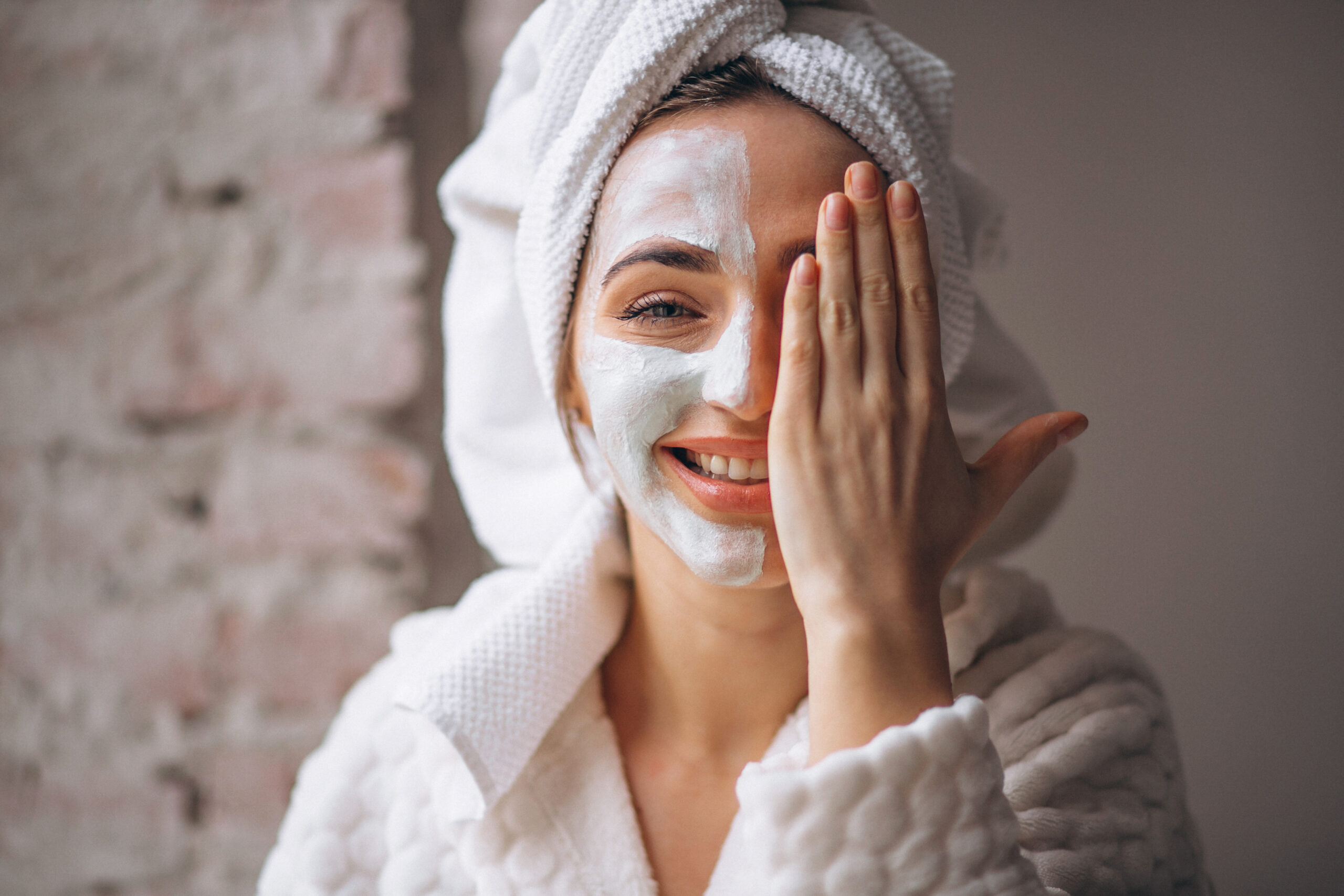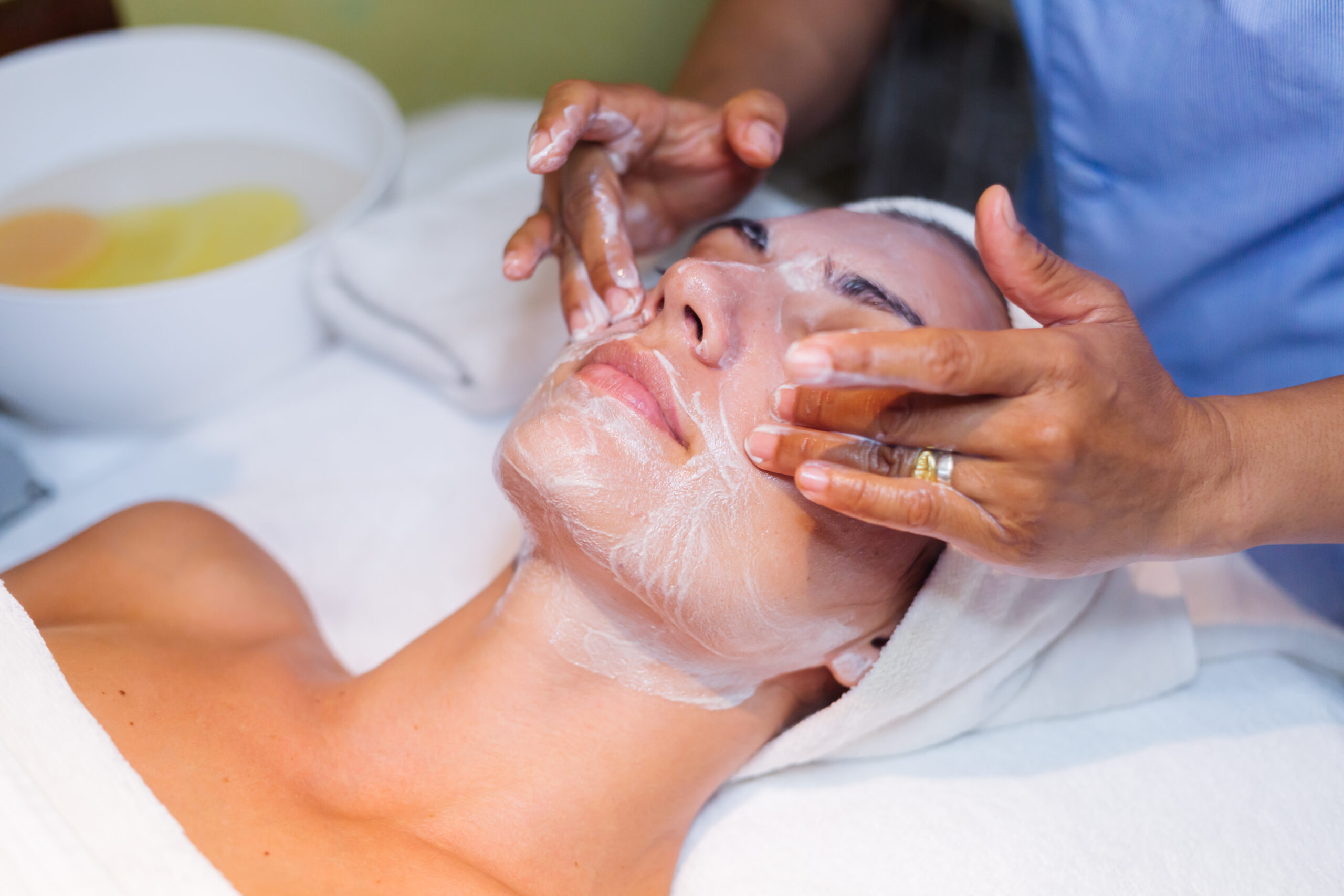Blackheads are dark or white lumps formed from dead skin cells and sebaceous gland secretions. They most often form in seborrheic areas, i.e., places on the skin with excessive sebum secretion (face, chest, back). Blackheads on the face often appear on the nose—after purulent superinfection, they can become papular-pustular acne lesions.

Not all comedones are the same, so I'll briefly remind you what each type is and how it forms so can tell them apart.
Closed comedones![]() develop when the outer layer of skin doesn't shed properly, causing the hair follicle opening to close, trapping sebum. It can lead to the formation of little, hard lumps that match the skin tone or appear slightly whitish. Unfortunately, they can become inflamed if bacteria get involved. When numerous closed comedones occur, they can create a so-called “porridge,” often seen on the forehead or cheeks.
develop when the outer layer of skin doesn't shed properly, causing the hair follicle opening to close, trapping sebum. It can lead to the formation of little, hard lumps that match the skin tone or appear slightly whitish. Unfortunately, they can become inflamed if bacteria get involved. When numerous closed comedones occur, they can create a so-called “porridge,” often seen on the forehead or cheeks.
These are so-called blackheads![]() and are formed when impurities accumulated in the opening of the hair follicle begin to oxidize, creating a black plug. When trying to squeeze out such a comedone, you can see its beginning and end, the contents are compact, darker at the top, lighter, and yellowish at the bottom. Open comedones most often occur on the nose.
and are formed when impurities accumulated in the opening of the hair follicle begin to oxidize, creating a black plug. When trying to squeeze out such a comedone, you can see its beginning and end, the contents are compact, darker at the top, lighter, and yellowish at the bottom. Open comedones most often occur on the nose.
Before we delve into how to get rid of blackheads, it's significant to understand the causes behind the appearance of these pesky pimples. The formation of blackheads![]() is influenced by two main factors: increased sebum production by the sebaceous glands and disruptions in shedding dead skin cells. When sebum and dead skin cells accumulate on the face, they can clog the openings of the skin's follicles, leading to the development of blackheads. These clogged follicles can harbor a mix of sebum and dead skin cells, both below and on the skin's surface.
is influenced by two main factors: increased sebum production by the sebaceous glands and disruptions in shedding dead skin cells. When sebum and dead skin cells accumulate on the face, they can clog the openings of the skin's follicles, leading to the development of blackheads. These clogged follicles can harbor a mix of sebum and dead skin cells, both below and on the skin's surface.
Although blackheads are usually painless and not accompanied by redness or swelling, they can become infected with bacteria, potentially transforming into inflamed pimples and other skin issues. Due to this risk, it's important not to squeeze blackheads, as it can lead to the spread of bacteria from our hands and faces.
Hormonal changes also play a direct role in blackhead formation, which is why they are commonly associated with teenagers. Androgens, a type of hormone, are primarily responsible for this, and their levels are high during puberty. Additionally, hormonal fluctuations during pregnancy, menstruation, and when taking contraceptives can create conditions that are conducive to the development of various types of pimples.
The following factors![]() may have an impact:
may have an impact:
Start by thoroughly cleansing the skin – at home and in the salon. You should also pay attention to the cosmetics you use – avoiding heavy and oily consistencies, which can additionally clog the sebaceous glands.
Home care![]() may include:
may include:

Remember that even the most experienced dermatologists or cosmetologists can't completely eliminate imperfections on our face, like whiteheads, blackheads, or more intense pimples, if we don't consider our lifestyle![]() . Changing factors directly affecting the skin's condition is crucial to minimizing skin issues.
. Changing factors directly affecting the skin's condition is crucial to minimizing skin issues.
A key factor is improving our diet. If we haven't focused on the quality of our food and often indulge in fast food, sodas, sweets, and processed ready-to-eat meals, it's time to adopt healthier eating habits. Adding fresh fruits and vegetables, packed with vitamins and minerals, can benefit our skin. Opting for lean meat and fish and choosing nuts over chocolate for snacks is also significant. We are additionally, drinking at least 2 liters of water daily hydrates the skin and aids in toxin elimination. It's essential to limit alcohol intake and quit smoking.
Although challenging, managing stress is crucial for reducing skin issues. For instance, if work imposes time pressure and many responsibilities, finding time to relax after returning home, such as spending time with loved ones or watching a favorite movie, can help the body calm down. Sufficient sleep is also crucial; adults need about 7 hours daily. A regular sleep pattern surprisingly impacts skin appearance significantly.
Tailoring facial care is vital for achieving beautiful skin, especially for those aiming to get rid of blackheads. The skincare products we use and how we use them can quickly impact the improvement and deterioration of our skin's condition.
Before we move on to care, it is worth noting that makeup products should also be examined. Heavy, oily foundations or drying powders can disrupt the sebum production process and lead to clogged pores, which will result in the formation of more blackheads and even inflammation. It is, therefore, a good idea to choose light cosmetics that will both even out the skin tone and not overload it.
While skillful makeup can mask certain imperfections, the most important thing is to address the very cause of the problem through skin care![]() .
.
This is an issue that should not be ignored. As already mentioned, the formation of comedones is caused by the accumulation of sebum, dead skin cells, and other impurities that block hair follicles. Facial cleansing will, therefore, play the most important role in reducing them, as it is thanks to it that we will get rid of all bacteria and other undesirable substances.
This is why you should wash your face thoroughly every morning and evening (in the latter case after previously removing make-up). When choosing the right cleansing cosmetic that is supposed to help us get rid of comedones, it is worth paying attention to the composition of the product and the active substances contained in it. Cosmetics based on too-strong detergents can have a drying and irritating effect, which can cause even more blackheads to appear. In such a situation, it is worth reaching for an effective but at the same time gentle cosmetic.
After washing, the natural pH of our skin can be disturbed, so it is worth using a toner later, which will help to even it out and gently narrow the pores. Moisten a cotton pad and gently wipe the skin with it. In addition to significantly reducing the visibility of pores, it also has soothing and antioxidant properties, thanks to which, among other things, it will affect the regulation of the amount of sebum produced. It is, therefore, an ideal choice for people with oily and acne-prone skin, where blackheads occur.
After completing the cleansing stage, it is necessary to apply a face cream, regardless of whether we are talking about the morning or evening care routine. The ingredients of such a cosmetic should support the skin in the regeneration process, which will significantly reduce imperfections.
If we are struggling with oily skin, we should not under any circumstances give in to the impression that moisturizing is unnecessary—the lack of proper hydration activates the sebaceous glands and stimulates them to work harder. Therefore, if we forcefully dry out the skin, it will try to defend itself by producing excessive amounts of sebum. A moisturizing cream for blackheads and closed blackheads will prevent such a result.
Given that improper exfoliation causes blackheads, regular exfoliation is necessary to support the process and thoroughly cleanse the skin. It's important to use gentle exfoliants to avoid skin irritation and dryness.

Manual cleansing![]() is a basic treatment for comedonal skin, recommended in beauty and dermatological salons. However, the treatment must comply with all the rules of hygiene and caution, and the skin should be properly prepared for it (softened – usually with steam and a mask or microdermabrasion). Depending on the severity of the problem, this procedure should be performed no more often than once every 4 weeks, usually once every 2-3 months (more often in the summer because then the skin becomes polluted faster and blackheads are more visible).
is a basic treatment for comedonal skin, recommended in beauty and dermatological salons. However, the treatment must comply with all the rules of hygiene and caution, and the skin should be properly prepared for it (softened – usually with steam and a mask or microdermabrasion). Depending on the severity of the problem, this procedure should be performed no more often than once every 4 weeks, usually once every 2-3 months (more often in the summer because then the skin becomes polluted faster and blackheads are more visible).
Microdermabrasion![]() is the procedure that involves mechanical exfoliation of the layer of dead skin cells using a diamond head or corundum crystals. So-called hydrabrasion (water microdermabrasion) or oxybrasion (oxygen with physiological salt) are also used. The procedures effectively cleanse the skin and remove blackheads, which is worth doing regularly. You can also find devices for home microdermabrasion on the market. After microdermabrasion, applying a soothing mask to the skin is recommended.
is the procedure that involves mechanical exfoliation of the layer of dead skin cells using a diamond head or corundum crystals. So-called hydrabrasion (water microdermabrasion) or oxybrasion (oxygen with physiological salt) are also used. The procedures effectively cleanse the skin and remove blackheads, which is worth doing regularly. You can also find devices for home microdermabrasion on the market. After microdermabrasion, applying a soothing mask to the skin is recommended.
Cavitation peeling![]() is a gentle exfoliation procedure for dead skin cells that uses ultrasound to break them down and remove them. It can be performed once every 2-3 weeks. Specialized devices for home cavitation are also available.
is a gentle exfoliation procedure for dead skin cells that uses ultrasound to break them down and remove them. It can be performed once every 2-3 weeks. Specialized devices for home cavitation are also available.
Chemical peels![]() are recommended for blackhead cleansing treatments. Due to its low molecular weight, it can penetrate deeply into hair follicles, breaking down the intercellular substances and removing the residual horny mass responsible for blackhead formation. Regularly performing this treatment prevents comedonal acne development.
are recommended for blackhead cleansing treatments. Due to its low molecular weight, it can penetrate deeply into hair follicles, breaking down the intercellular substances and removing the residual horny mass responsible for blackhead formation. Regularly performing this treatment prevents comedonal acne development.